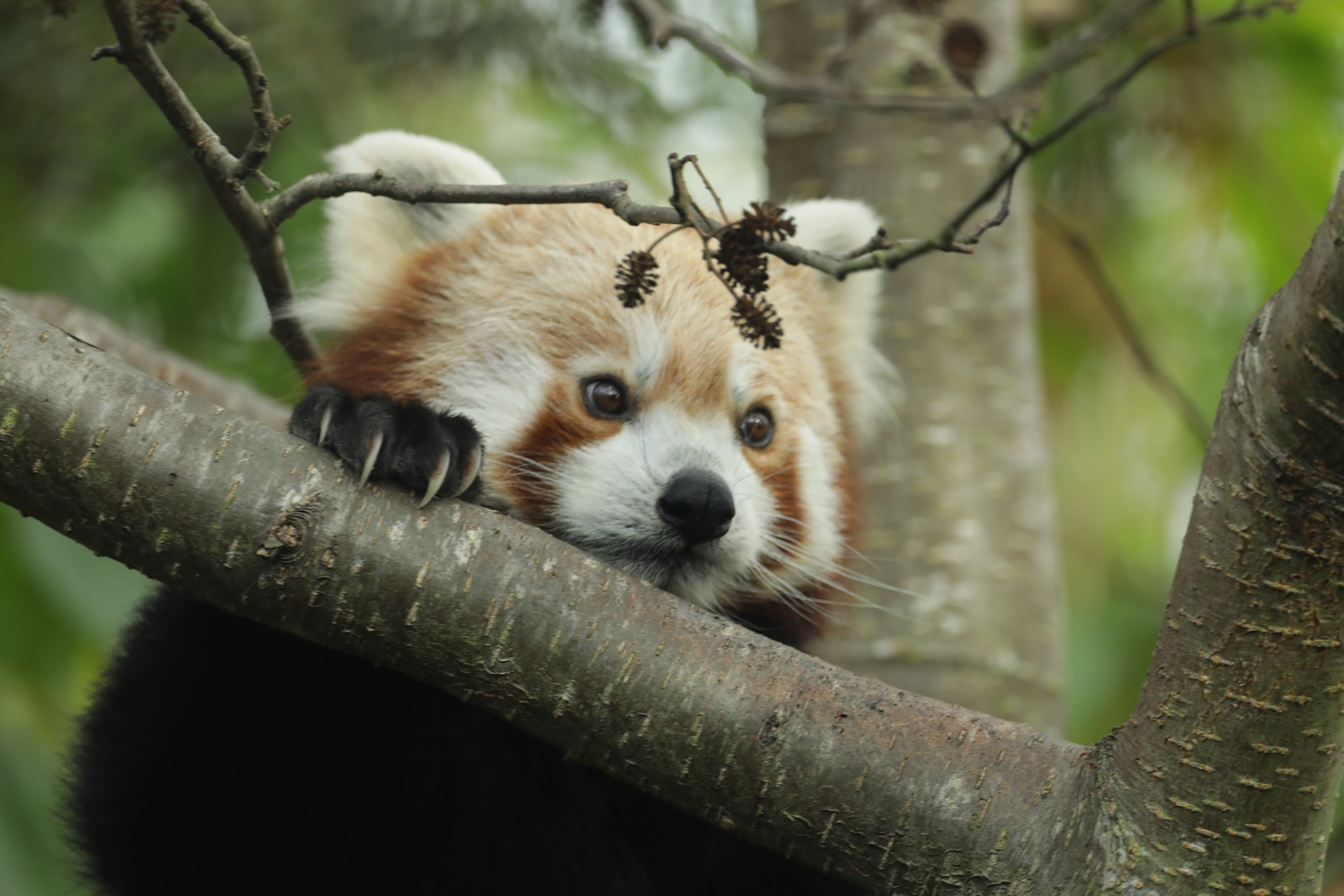Over 7,000 ‘glow-in-the-dark' snails return to island homes
Posted 13 Nov 2025

Thousands of 'glow-in-the-dark' snails have been reintroduced to French Polynesia as part of global conservation programme to save the snails from the brink of extinction.
The annual reintroduction of zoo-bred Extinct in the Wild and Critically Endangered Partula snails saw over 7,000 snails returned to four islands, making it the largest release of the group of finger-nail sized snail species and subspecies to date.
Before release, conservationists dotted the shell of each snail with a small dab of white UV reflective paint, which glows blue under UV light. As the snails are most active at night, the paint helps the team find released snails and monitor the recovery of the species.
During the releases, the team discovered an unmarked, juvenile Partula varia – making it the first wild-born member of this reintroduced snail species to be spotted in over 30 years. This discovery is proof that the Partula species is not only surviving on their native island of Huahine, but that they are successfully breeding – a momentous milestone for the programme.
The exciting find is a promising sign for recovery of the species, and comes less than a year after the programme saw the reclassification of another Partula snail species – Partula tohiveana – from Extinct-in-the-Wild to Critically Endangered on the IUCN Red List of Threatened Species, the global assessment of extinction risk.
The team also found the first evidence of wild-born Partula tohiveana living outside of their original release area on their native island of Moorea, indicating that the tropical snails are both continuing to thrive and expanding their range.
The team hope that future surveys and reintroductions will soon lead to more discoveries of wild-born snails – including Partula varia - and allow more species and subspecies to join Partula tohieveana in being downlisted.
The snails were part of carefully managed annual reintroductions, led by ZSL conservationists, which has coordinated the release of almost 40,000 snails over the last ten years.
Eleven species and sub-species of the snails, reared at Edinburgh Zoo, London and Whipsnade Zoos, Akron Zoo, Bristol Zoological Society, Detroit Zoo, Marwell Wildlife, Riga Zoo, Saint Louis Zoo, Sedgwick County Zoo, Woodland Park Zoo, Wuppertal Zoo and Zoo Schwerin travelled more than 15,000km to the islands.
The UV-reflective paint not only helps the conservationists find the snails nestled amongst the leaves and branches, but it also allows them to quickly tell apart released snails and their wild-born descendants.
Craig Close, senior animal keeper at Edinburgh Zoo, said: “It is tremendously exciting to be sending over 2,000 Partula snails back into their native habitat this year. As a wildlife conservation charity, we are incredibly proud to contribute to this vital collaborative breeding programme, which is giving this remarkable species a powerful lifeline.
"Our achievements with the Partula snail are a testament to the dedication of the teams who began this work decades ago at Edinburgh Zoo, as well as the commitment of our partners who continue to drive the project forward. This is a truly inspiring conservation success story and a compelling reminder of the essential role zoos play in global species recovery.”
Also known as Polynesian tree snails, these precious molluscs play an important role in the health of their forest ecosystems; by eating decaying plants and fungi, they help prevent the spread of disease and cycle important nutrients through the food chain.
Wild populations of Partula snails were decimated in the 1980s and early 1990s by the introduction of the invasive and carnivorous rosy wolf snail (Euglandina rosea) to control numbers of the previously introduced African giant land snail (Lissachatina fulica).
The last remaining individuals of 15 Partula species and sub-species were rescued by conservationists in the early 1990s, launching the international programme to recover the breed these snails and recover their wild populations.
Every visit to Edinburgh Zoo supports RZSS's global conservation work
